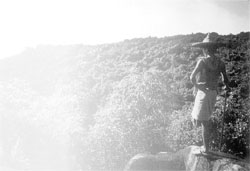The fall and rise of the woods
 1920s: The British introduced railway lines in Orissa. Commercial exploitation of forests began in a big way.
1920s: The British introduced railway lines in Orissa. Commercial exploitation of forests began in a big way.
1930s: In Dhenkanal, people revolted against the king for rights over the forests they traditionally protected. Lapanga village in Sambalpur became the first recorded village to protect forests.The king of Mayurbhanj initiated JFM and gave the villagers a 50 per cent share of forest produce to quell the revolt. Nayagarh and Khurda also adopted the same policy.
1940s: In Dhenkanal, some villages started protecting forests on their periphery after the king allowed contractors to clear forests.
1950s: The Land Reform Bill came into being. Forests on the boundary of a village were declared village forests. After the Community Block Development unit was introduced nationwide, village youth clubs in Bolangir district started protecting and regenerating forests. Some other villages also started protecting forests for fuelwood.
1960s: Orissa faced severe periods of drought. Villages in Mayurbhanj and Nayagarh started protecting forests, mainly for fuelwood and sal leaves, which is used to make plates. Protection of reserve forests had not started. The government launched its social forestry programme.
1970s: In Nayagarh, Bolangir, Mayurbhanj and Dhenkanal districts people started protecting even reserve forests.
1980s: In west Orissa, particularly Bolangir district, forests protected by communities became the new economic front. The movement spread to almost all districts barring non-forest ones. During the 1984-85 state elections, community rights became a poll issue. The Swedish International Development Agency (SIDA) funded the social forestry programme.
1990s: The state government adopted JFM. Informal communities started organising themselves. In 1992, the first district federation of villages was formed in Nayagarh. It also laid the foundation for the state-level organisation, Orissa Jungle Manch (OJM). With state elections around the corner, OJM began a decisive battle for ownership rights in 1999.
